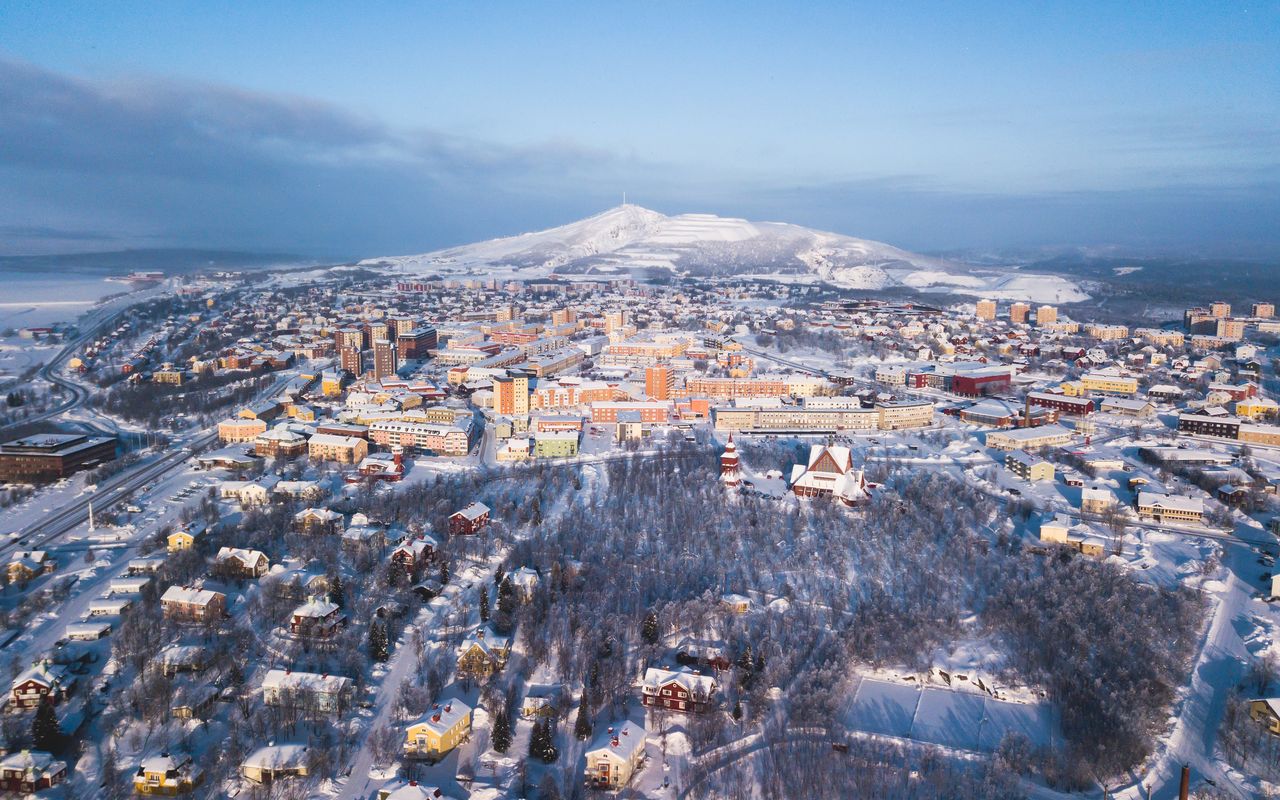KIRUNA, Sweden ― Near the top of the world, more than 90 miles into the Arctic Circle, lies Kiruna. Nestled between two mountains, it’s a small but sprawling city of 18,000 people with views over two mountains. To the north, Luossavaara is cleaved open, a legacy from its former life as an open pit mine, to the southwest is Kiirunavaara, a working mine, belching out columns of smoke.
This is the century-old mine on which Kiruna’s fortunes are made and broken. Workers toil nearly 1 mile below ground, sending out 6,800 tons of iron ore a day on trains destined for the Norwegian port of Narvik and then to the rest of the world. Refined into steel, it’s enough ore to produce 40,000 cars a day.
“We wouldn’t be here if we didn’t have the mine,” says Gun-Britt Landin, who leads guided mine tours with the local tourist center and was born in Kiruna. “The city and the mine have been living in symbiosis all these years, and when things happen in the mine, well, it has an effect on the city.”
And things are happening. The mine may be the linchpin of the city, but it’s also destroying it.
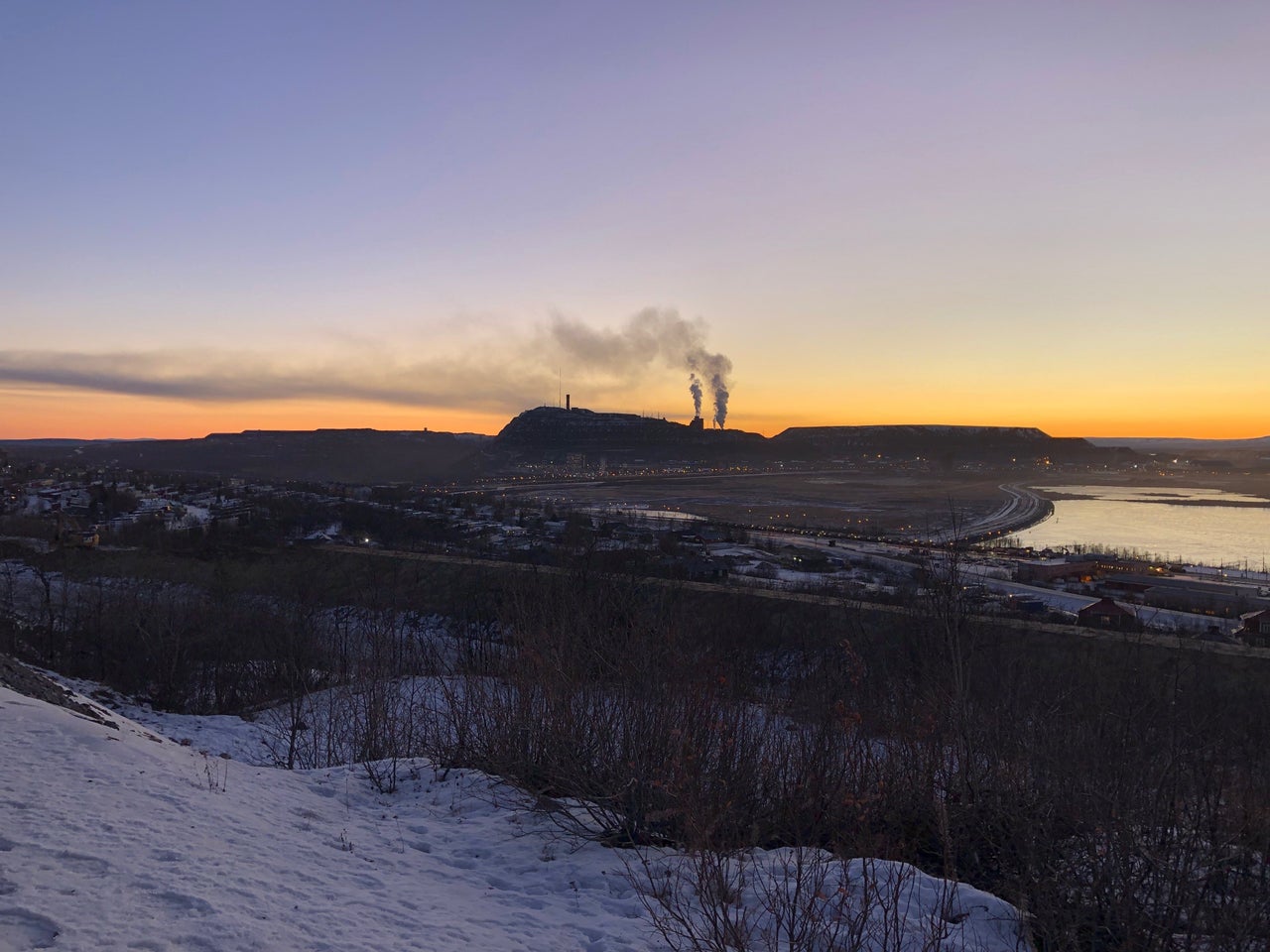
Mining tunnels incline under the city, leaving Kiruna perched perilously on top of crumbling rocks. These “cave in, part by part, and in the end will swallow our city,” says Landin. Cracks and subsidence have already claimed a clutch of structures near the mine, and it’s estimated the rest of the city center will tumble inward before the end of the century.
So what to do with a mine that’s eating a city? The answer: Keep the mine; move the city.
The municipality, in conjunction with the state-owned mining company LKAB, has drawn a big red line around the threatened part of the city. Every building within this section, which includes shops, City Hall, restaurants, cafes, a fire station, schools and homes, will either be destroyed or, if deemed to be of sufficient historical or cultural value, will be moved two miles to the new city center.
“We don’t just want to move buildings, physical buildings, we also want to move history and feelings you can remember,” says Clara Nyström, the city antiquarian for Kiruna municipality and the person in charge of preserving Kiruna’s heritage.
As part of this, Kiruna’s grand church, which squats on a hill overlooking the current city and was once voted the most beautiful building in Sweden, is one of around 30 buildings to be moved. It will be lifted off its foundations and taken to the new center in 2026, in what seems an unfathomably hard operation for a building that can seat 800 people.
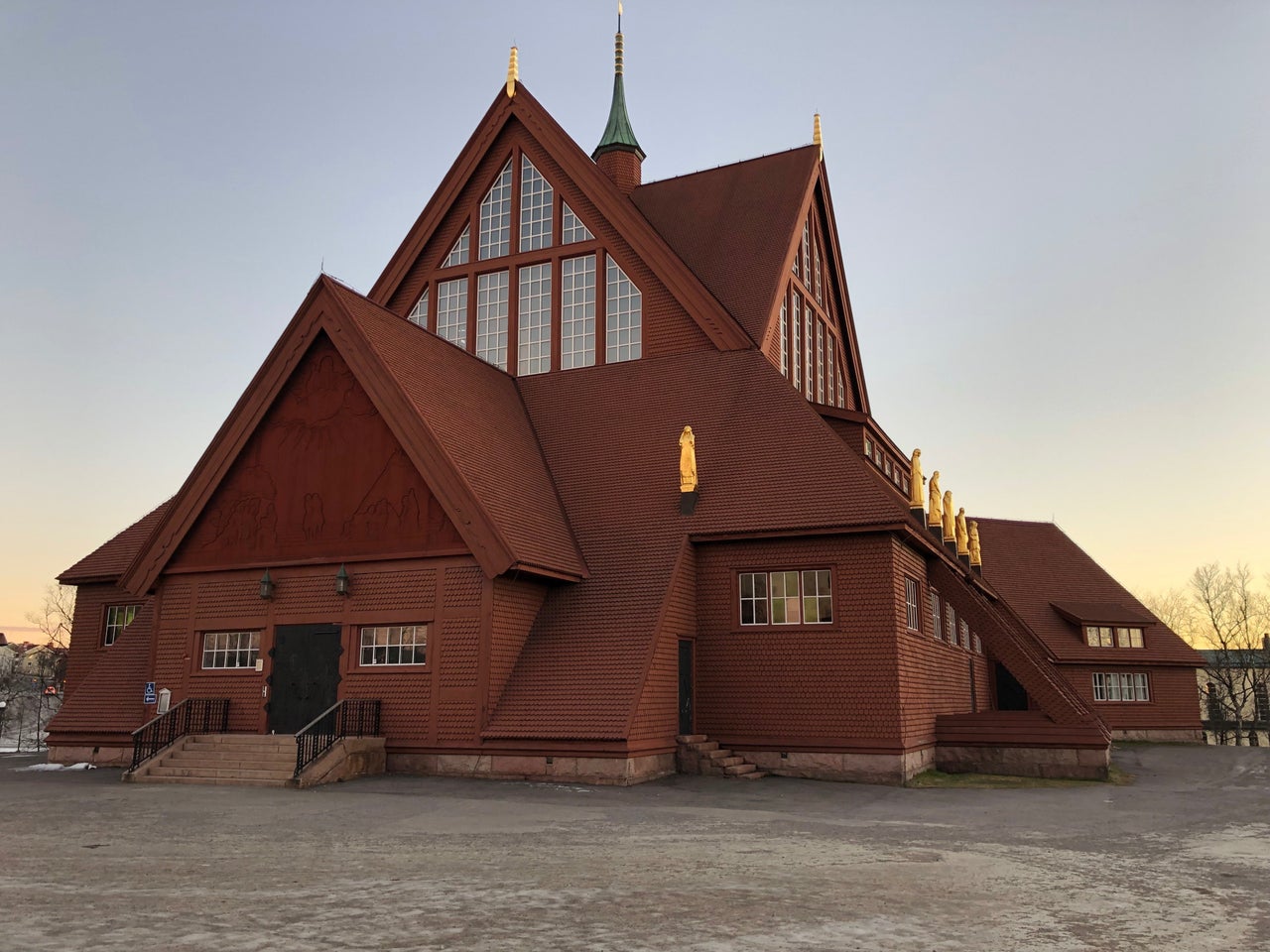
Moving a city is not a new phenomenon – Hibbing, Minnesota, was relocated two miles away in the 1910s, also due to a mine, and, just down the road from Kiruna, the smaller town of Malmberget is also being moved. But Kiruna is high-profile, billed as the world’s largest urban relocation. About $1 billion has been promised by LKAB to complete the move, expected to be finished between 2035 and 2040. This may sound generous, but it’s a legal obligation ― the mining company has caused the damage and, under Swedish law, it must pay for it.
Then there are the optics: how a global thirst for iron ore ― used for everything from dishwashers to skyscrapers ― has pushed a mine to go deeper and deeper to meet demand, swallowing a city in the process.
When I arrive in late November for the opening of the brand-new City Hall, the sun barely lifts from the horizon before setting at 1:30 p.m. The low light picks out the golden tones of this circular building, “The Crystal,” designed by Danish architecture firm Henning Larsen. It sits in the middle of what will be Kiruna’s new city center, a patch of land in a valley to the east of the existing city, which once bore the nickname “death valley,” thanks to its former life as a city dump and car junkyard.
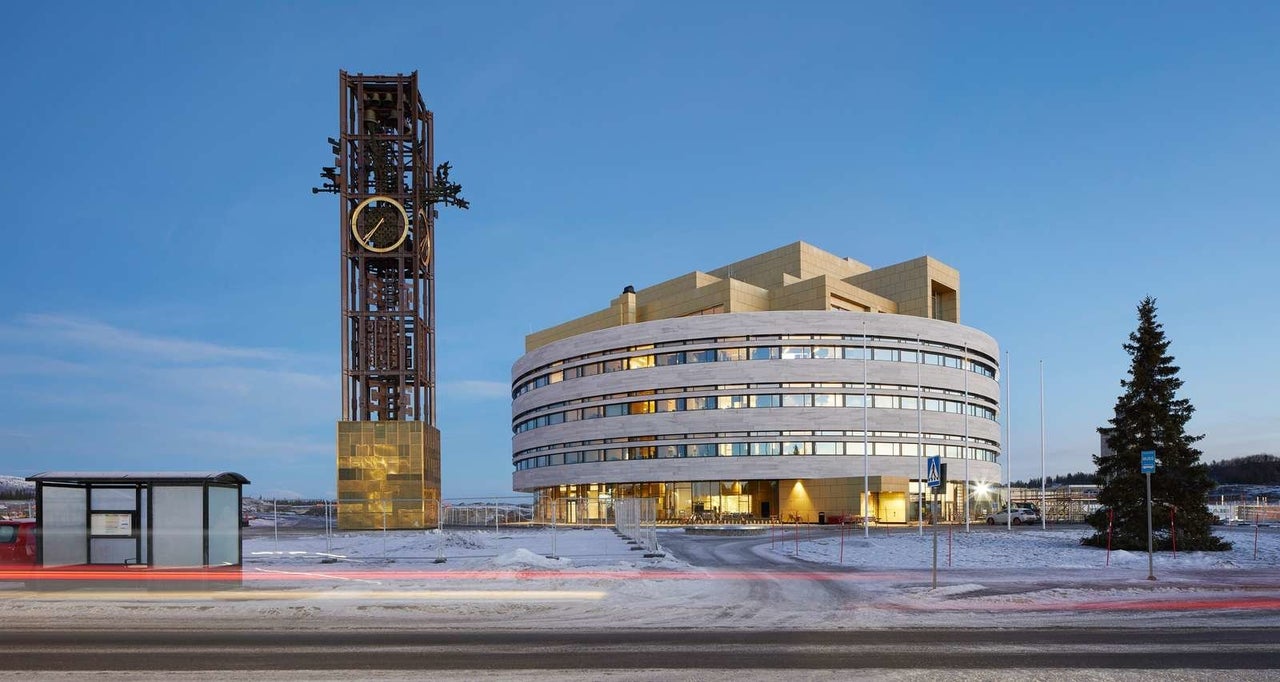
For now, it bustles with cranes and trucks as the skeletons of new buildings are starting to appear. The plan is that this part of the city ― mostly offices, commercial premises, public buildings and a scattering of apartments ― will be completed by 2022.
The bulk of the city will be moved by around 2030, says Johan Mäkitaavola, a project manager at LKAB. This includes about 4,000 units of housing and 8,000 people. Those who own their own homes can choose to have LKAB buy them out for 125 percent of market value, or they can ask for new house to be built for them in the relocated city. The vast majority have opted for the newly built house.
For residents, this opening of the new City Hall doesn’t seem so much of a milestone as just another marker along the way to a move that has been nearly two decades in the making and may take another two to complete.
“They have been talking about this for 20 years. It has been in the back of your head if you live here for as long as I have been a grown-up, so it’s like breathing,” says Nils Johan Labba, a craftsman and a member of the indigenous Sami people, who used to herd reindeer across the land where the existing city now rests.
Legend goes that it was a Sami man who first realized the area was rich in ore and, on being convinced to tell someone, set off a chain of events that would not go well for his people. Asked whether he feels the Sami people were part of the city move, Labba says, “Kiruna as a city doesn’t take much consideration about Sami people or Sami lifestyle. They just don’t need to give a fuck, so they don’t give a fuck.”
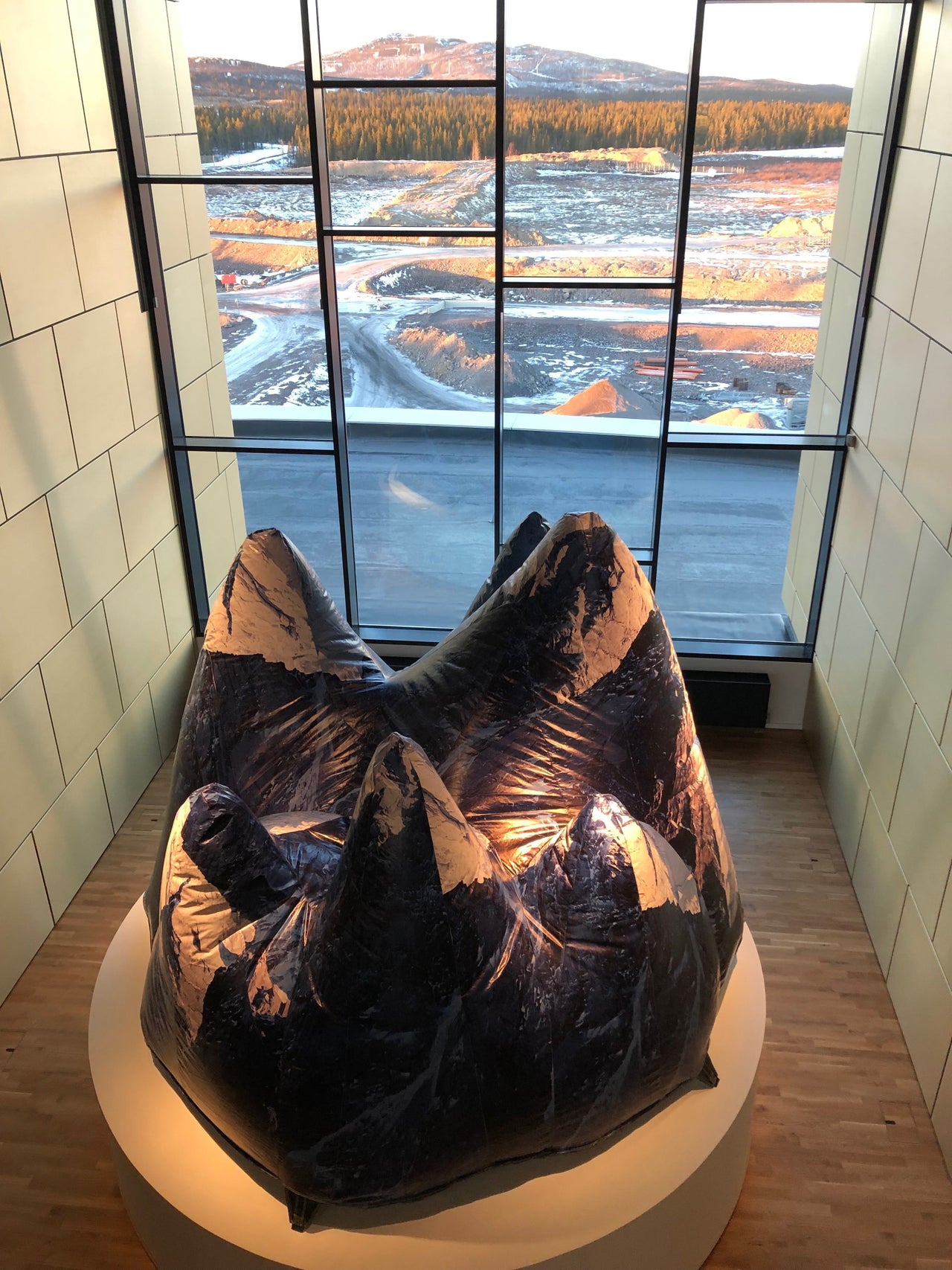
LKAB and the municipality are keen to stress the Sami people are well integrated into the city and have been considered in the move. “I think that we are doing the best we can to make it work. ... To take care of the cultural spirit living in Kiruna,” says Stefan Sydberg, the second deputy mayor of Kiruna.
Sydberg stresses it’s important to make the city attractive and appealing to all residents. The old city is “quite a wasteland,” he says. And it does feel a little bleak. There is no main drag of shops or town square, the most central point in Kiruna is a car park overlooked by a handful of shops, a hotel and some apartment buildings. All slated for demolition.
After “intensive” consultation with residents, says Sydberg, one key request emerged: “They wanted a dense city center.” Krister Lindstedt, from Stockholm-based architecture firm White Arkitekter, which won the bid to design the new city, was asked to realize this vision. He is evangelical about the design that emerged, which includes wide “green corridors” into the city center and meeting places in squares and parks.
He admits that the new location for the city center, in a valley without a view, represents “one of many [examples] where Kiruna will lose part of its identity and character,” but he hopes a closer proximity to nature can offset this.
Residents, however, complain the valley location not only cuts off views to the mountains but also means a temperature drop of 18 degrees Fahrenheit or more in the winter. And winters in Kiruna are already brutal, with temperatures plunging to lows of around -2.
“What will that do to your electricity bill?” asks Jessica Schock, 28, half laughing. The German native runs guided tours and works at Bjöhrns Cafe in the city.
Asked how she feels about the move, she says, “A bit insecure, because I don’t know … will it be ready in 2022? Will I get a key to the new place? And can I just move? Or will I not even get a new place that’s affordable?”

The city move has laid bare some of the bones of inequality in the city, which is already experiencing a heated property market thanks to a housing shortage.
“You have to take into account that Kiruna is an extremely divided city,” says Göran Cars, the urban planner for Kiruna. There’s very good money to made in the mine, but there’s another slice of the population that doesn’t benefit from it. For example, older women who don’t work and whose husbands have died.
“In the same day, I could meet a woman who is extremely worried and says ‘I can’t afford one crown extra in rent,’ and I can have a young boy coming of 25 and saying, ‘I would like to have a sauna in my apartment.’”
Rents will be higher in the new city, even if LKAB has agreed to stagger increases, giving people nine years to get used to it. “Or, as we say in Sweden,” says Landin, the mine guide, “you have time to adjust your stomach to your money purse.”
For some people, even tiny increases could be difficult. The solution, says Cars, is for them to take older apartments when they become available, but there is a wait list for these.
“Only the people who own houses have certainty,” says Jokim Lidaahult, 25, who works at Kiruna Guidetur, a small tourist company. He lives in staff accommodation because he can’t afford the rent on an apartment in the existing city. He believes it will only get more expensive. Lidaahult is unfazed, though. Like many young people, he plans to leave soon. “People don’t want to work in the mine, especially like me. They want to go out into the world and look around and not be in small Kiruna for all of eternity.”
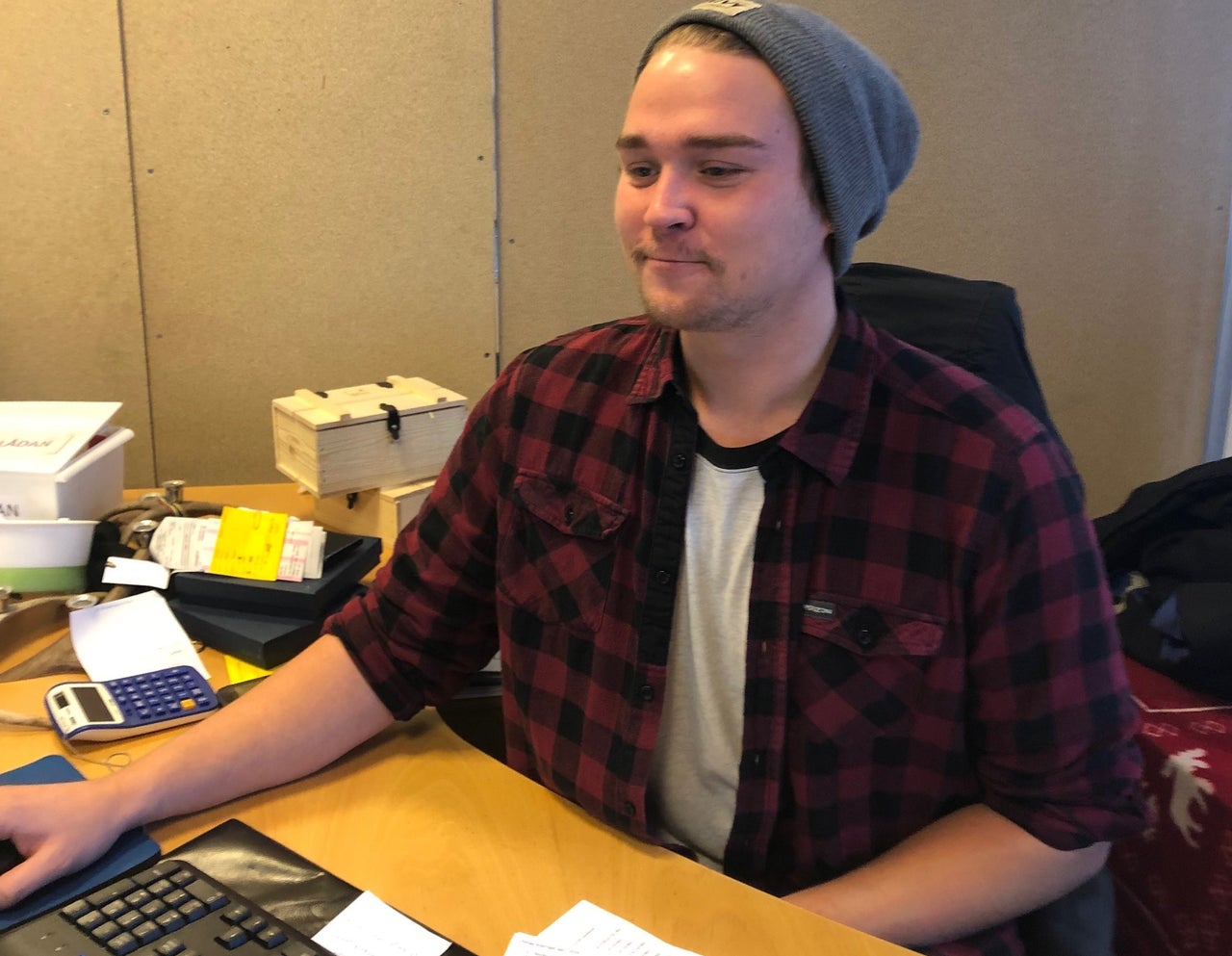
For older residents, it’s tougher. Birgitta Dahlberg works at Centrum, a clothing store that has been a landmark in the city since 1925, thanks to a distinctive neon sign that curves around the shop’s facade. It’s being relocated in 2022.
“I live around the corner,” Dahlberg says, “I have to go.”
As a renter, her options are limited: She can move to the new city if she can afford the increased cost, or she has been told she can move into one of the older flats in the safe parts of the current city once they become free.
But the uncertainty is taking a toll. “You can’t grasp it on a daily basis because you would go nuts if you are just thinking about that all the time,” she says. “What’s going to happen? Where will I live? Can I afford to live at that place? Do [LKAB] have the money to do this? Because, if they are doing this and it’s as it’s supposed to be done, it will be great. Not many people have the chance to do a city all over again and make something very right.”
The owner of the store and her boss, Janne Lindgren, is in a better position. He sold his building to LKAB and will be renting a store in the new city when they move, an arrangement he says takes pressure off the family. He also lives in a part of Kiruna that isn’t affected. “It’s a lot of history here,” he says, admitting the family was initially unhappy to move the store. But, he adds, “I think it’s going to be good in the future.”

While many residents seem uncomfortably aware that some have a much better deal than others in the move, the overwhelming sense is pragmatism.
“Some people got squeezed, got a bad deal, and that’s really, really, really bad,” says Magnus Åkerland, a explosives blaster with LKAB, “but that aside, we have to move the town.”
“And the money keeps rolling,” he adds with a wry smile, “you have to do something to keep the economy going because that seems to be our only goal. That’s the goal for everybody.”
As climate change continues to tighten its grip, leading to more extreme weather, from fires to floods, it’s likely many towns and cities may have to follow in Kiruna’s footsteps. Already the tiny town of Kivelina, on a vulnerable Alaskan peninsula, is planning to relocate because of climate change, although it’s unlikely to benefit from a deep-pocketed company to pay for it.
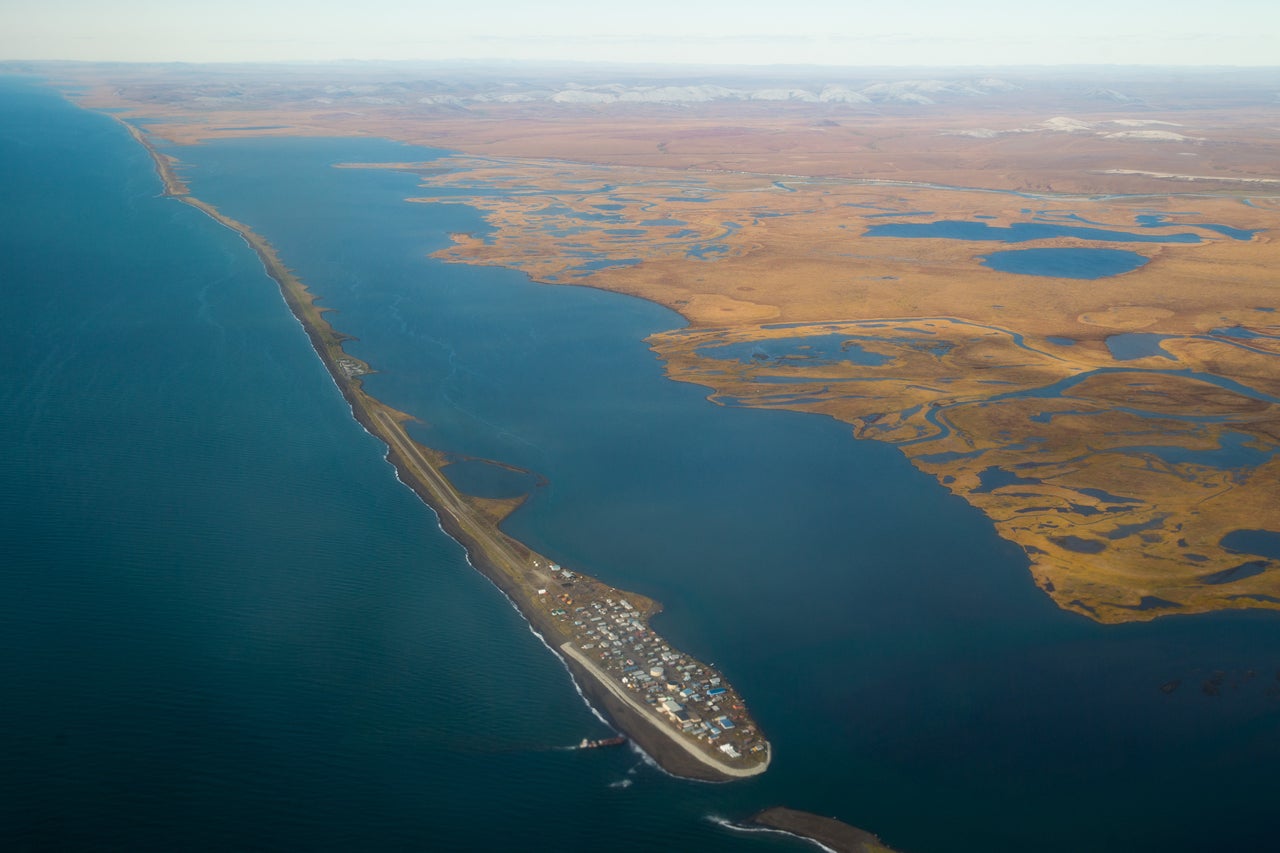
“We have gotten some interest from other cities,” says architect Krister Lindstedt. “For example, in the U.S. there will be a lot of towns and villages that will have to be moved along the Mississippi River due to climate change and water levels. And they immediately saw [that Kiruna] is a role model for the social aspects of the move.”
But any city move, however thoughtfully and artfully executed, means destroying some of the past. And that, perhaps, is one of the hardest things for many Kiruna residents.
At Centrum, Dahlberg says relocations on a smaller scale in Sweden have been going on for a long time. “Areas are not only shut down, but they are erased .... You can never go back and say I grew up there. It will be like, did it? Did it happen? Have I existed before?”
For more content and to be part of the “This New World” community, follow our Facebook page.
HuffPost’s “This New World” series is funded by Partners for a New Economy and the Kendeda Fund. All content is editorially independent, with no influence or input from the foundations. If you have an idea or tip for the editorial series, send an email to thisnewworld@huffpost.com.
